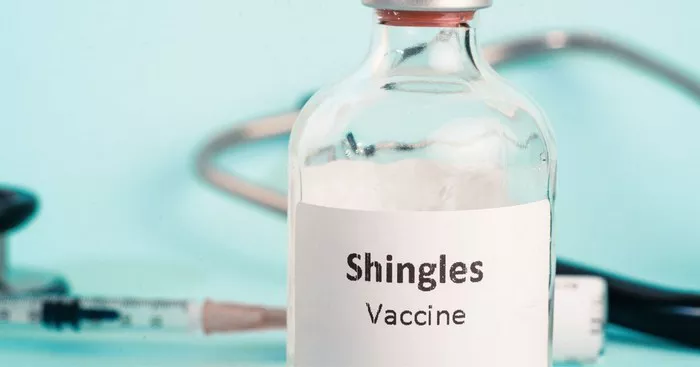Medicaid coverage for the shingles vaccine varies depending on your state and specific plan. In some states, Medicaid may fully cover the shingles vaccine for eligible beneficiaries, while in others, certain Medicaid plans, particularly managed care plans, may offer coverage. It’s essential to check with your state’s Medicaid program or your specific plan provider to verify coverage details.
Medicaid coverage for the shingles vaccine is critical because shingles, caused by the reactivation of the varicella-zoster virus (the same virus that causes chickenpox), can lead to severe pain and complications, particularly for older adults. Having the vaccine covered ensures affordability for at-risk populations, encouraging more individuals to receive this vital vaccination and avoid potential medical costs and complications associated with shingles.
SEE ASLO: How Often Do Shingles Come Back?
Information on Medicaid Coverage
State-Specific Information
Medicaid is a joint federal and state program, which means that while the federal government establishes certain minimum coverage standards, individual states have significant discretion in determining the specifics of their Medicaid plans. This results in coverage variations across states, particularly for adult preventive services like the shingles vaccine.
Some states may fully cover the cost of the shingles vaccine for Medicaid beneficiaries over the age of 50, while others may only provide partial coverage or include it in select plans. It’s important to check your state’s Medicaid guidelines to understand the specific benefits available.
For example, states like California and New York offer relatively broad coverage under Medicaid for the shingles vaccine, while other states may have more restrictive policies or require enrollment in a particular Medicaid plan for coverage.
Eligibility Criteria
Medicaid eligibility for the shingles vaccine is generally based on age, health status, and the specific Medicaid plan you are enrolled in. The shingles vaccine, also known as the Zoster vaccine, is recommended for adults over the age of 50, though Medicaid coverage may begin at age 60 in some states.
In general, to qualify for Medicaid coverage of the shingles vaccine:
You must meet your state’s Medicaid eligibility requirements, which are usually income-based.
You must be within the age range recommended for the vaccine.
In some states, you may need a prescription or prior authorization from a healthcare provider.
Depending on the state, individuals with certain chronic conditions or weakened immune systems may also qualify for coverage.
Specific Plan Coverage
Medicaid operates in two primary forms: fee-for-service (FFS) and managed care plans (MCPs). Coverage for the shingles vaccine may differ based on which plan you are enrolled in.
Fee-for-Service Medicaid (FFS): In FFS Medicaid, the state directly pays healthcare providers for services rendered to Medicaid beneficiaries. Coverage for the shingles vaccine may be included, but it’s important to confirm with your state’s FFS plan. Some states may offer full coverage, while others may require co-payments or limit coverage to specific healthcare providers.
Medicaid Managed Care Plans (MCPs): MCPs are private health insurance plans that contract with Medicaid to provide healthcare services. Many MCPs include preventive services like vaccines, including the shingles vaccine, as part of their standard coverage. However, coverage specifics may vary by plan and state, so beneficiaries should contact their plan provider to confirm whether the shingles vaccine is covered and if there are any associated costs.
Co-Pays or Deductibles
While some states may cover the shingles vaccine under Medicaid without any out-of-pocket costs, others may require co-pays or deductibles. Co-pays for vaccines under Medicaid are generally minimal, but they can vary depending on the state and plan.
For instance, a state may charge a nominal fee of $1 to $5 for vaccines, including the shingles vaccine, or waive the fee entirely for beneficiaries who fall under certain income thresholds or meet other eligibility criteria. In managed care plans, co-pays may also depend on whether you visit an in-network or out-of-network provider.
Steps to Get the Vaccine
Once you’ve confirmed that your Medicaid plan covers the shingles vaccine, follow these steps to ensure you receive the vaccine with the least hassle:
Find a Provider: Not all healthcare providers accept Medicaid, so it’s important to find one that does. Check with your local pharmacy, primary care physician, or a public health clinic to see if they offer the shingles vaccine and accept Medicaid.
Schedule an Appointment: Once you’ve found a provider, schedule an appointment to receive the shingles vaccine. Make sure to mention that you are covered by Medicaid and confirm any co-pays or fees that may apply.
Submit Necessary Documentation: Some Medicaid plans may require a prescription from your healthcare provider or prior authorization before covering the shingles vaccine. Be sure to have all necessary documentation ready when you visit the provider.
Keep Records: After receiving the vaccine, keep a copy of your vaccination record and any payment receipts in case you need to submit them to Medicaid or your healthcare provider for reimbursement or record-keeping.
Conclusion
Medicaid coverage for the shingles vaccine varies by state and plan, making it essential for beneficiaries to verify their coverage before receiving the vaccine. Given the serious complications shingles can cause, particularly for older adults, ensuring affordable access to the vaccine is crucial. By checking your specific Medicaid plan and following the necessary steps, you can protect yourself against shingles with minimal cost and effort.
Realted Topics:
























